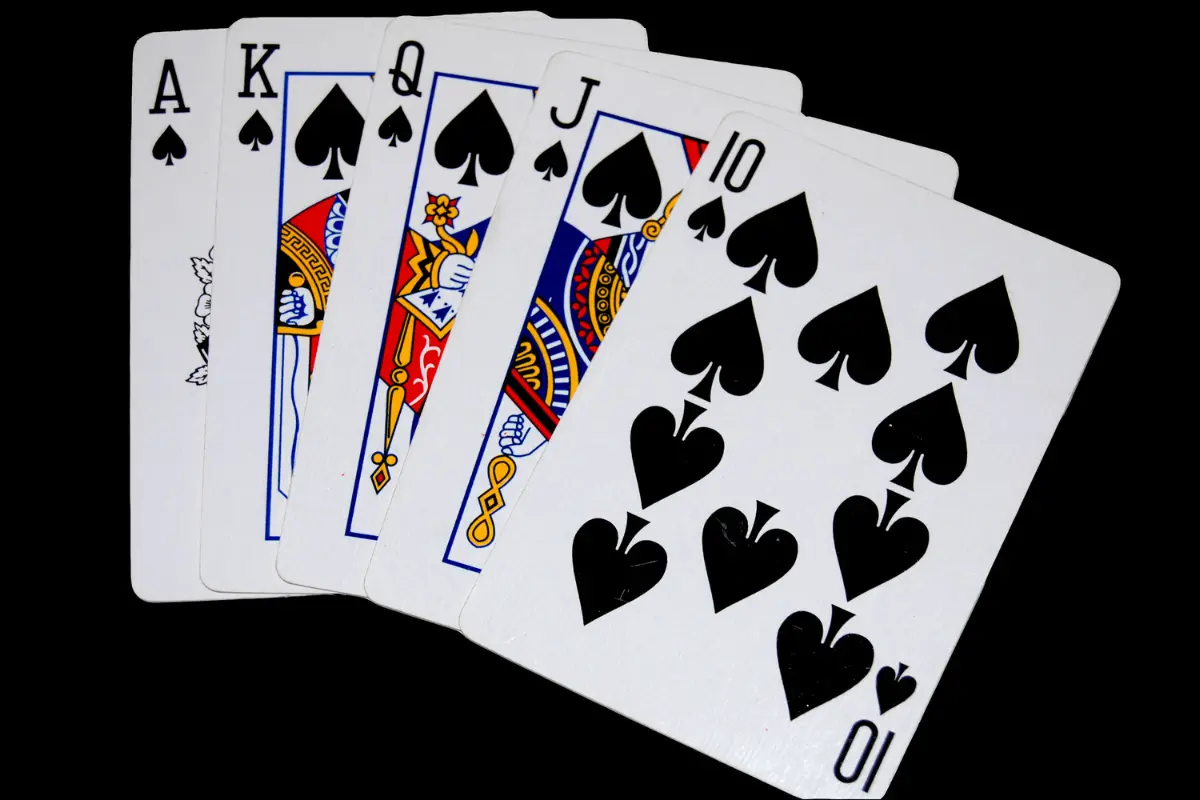A standard deck of cards is an integral part of games and magic tricks worldwide. While its straightforward structure may seem simple at first glance, it holds fascinating intricacies and rich history. Among the four suits—hearts, diamonds, clubs, and spades—the spades suit carries a unique charm. If you’re wondering “how many spades are in a deck of cards,” this article will delve into the answer, along with some intriguing details about the deck and the spade suit.
Understanding the Structure of a Deck of Cards
To answer how many spades are in a deck, we must first understand the structure of a standard deck of cards. A deck contains 52 cards, divided into four suits:
- Hearts
- Diamonds
- Clubs
- Spades
Each suit has exactly 13 cards, consisting of:
- Ace
- Numbers 2 through 10
- Jack
- Queen
- King
Thus, the spades suit also has 13 cards.
How Many Spades Are in a Deck of Cards?
In every standard 52-card deck, there are 13 spades. These include:
- Ace of Spades
- Two of Spades
- Three of Spades
- Four of Spades
- Five of Spades
- Six of Spades
- Seven of Spades
- Eight of Spades
- Nine of Spades
- Ten of Spades
- Jack of Spades
- Queen of Spades
- King of Spades
This balance is uniform across all four suits, ensuring that each suit represents exactly one-fourth of the deck.
A Closer Look at the Spade Suit
The spade suit is often associated with mystery, power, and elegance. Let’s take a deeper look at its symbolism and importance:
Symbolism of the Spade
The spade symbol originates from its use in medieval European card games. In French decks, the spade was a stylized representation of a spear or pike, symbolizing strength and courage. Over time, it evolved into its modern shape, resembling a leaf or inverted heart with a stalk.
The Ace of Spades
The Ace of Spades stands out as the most iconic card in the deck. It holds special significance in many card games, often carrying the highest value. In historical contexts, particularly during wartime, the Ace of Spades was seen as a symbol of good fortune or even a harbinger of death.
Court Cards in the Spade Suit
The Jack, Queen, and King of Spades are the court cards, representing figures of royalty. Each of these cards has unique artistic depictions, varying slightly depending on the manufacturer. The King of Spades, for example, is often referred to as the “suicide king” due to its depiction holding a sword pointed toward its own head in traditional designs.
Games Involving the Spade Suit
The spade suit plays a pivotal role in many card games. Here are some popular games where spades shine:
1. Spades
As the name suggests, the game of Spades revolves around this suit. It is a trick-taking game where the spade suit acts as the trump, meaning it outranks all other suits in most scenarios.
2. Bridge
In bridge, spades are one of the four suits used in bidding. Spades are ranked highest among the suits, making them crucial for winning bids and securing high-scoring contracts.
3. Hearts
Although the focus of the game Hearts is to avoid collecting points, the Queen of Spades is a card to watch out for, as it carries a hefty penalty of 13 points if captured.
4. Euchre
In Euchre, spades can act as the trump suit depending on the dealer’s choice, making the cards in this suit highly valuable during gameplay.
Interesting Facts About Spades
The spades suit isn’t just a functional part of the deck; it has a fascinating history and unique characteristics.
The Role of Spades in Tarot
In tarot card readings, spades correspond to the suit of swords, which represents intellect, conflict, and power. This connection adds a layer of mystique to the spade suit in regular card decks.
The Ace of Spades in Popular Culture
The Ace of Spades is a widely recognized symbol in pop culture, often associated with rock and metal music. It gained fame through the song “Ace of Spades” by the band Motörhead, cementing its image as a symbol of rebellion and risk-taking.
The “Death Card” Myth
The Ace of Spades has sometimes been referred to as the “death card,” especially in folklore and wartime stories. During the Vietnam War, American soldiers left the Ace of Spades on the bodies of enemies as a psychological tactic.
Designs and Variations of the Spade Suit
Card manufacturers often introduce unique designs for the spade suit, particularly for the Ace of Spades. Here’s how designs vary:
Standard Decks
In most decks, the spade cards follow a uniform design, with the Ace of Spades often featuring elaborate patterns or logos of the manufacturer.
Luxury or Custom Decks
Luxury card decks may include intricate designs for all spade cards, making them collectible items for enthusiasts.
Novelty Decks
In themed or novelty decks, the spade suit might take on creative interpretations to align with the theme, such as replacing the spade symbol with a related icon.
The Importance of Spades in Cardistry and Magic
The spade suit is not just for gameplay; it plays a significant role in cardistry and magic tricks.
Spades, especially the Ace and King, are often used in flourishes and displays because of their striking design and symbolism.
Magicians frequently incorporate the spade suit into their routines. The Ace of Spades, being the most visually distinct card, is often chosen as a “marked” or special card in tricks.
Conclusion
To sum up, there are exactly 13 spades in a standard 52-card deck. Each spade card, from the Ace to the King, holds its unique place in card games, magic, and cultural significance. The spade suit, with its deep historical roots and iconic designs, continues to captivate card enthusiasts around the world. Whether you’re playing a friendly game of Spades, performing a magic trick, or delving into the history of cards, the spade suit is a fascinating part of the deck that never fails to impress.
Next time you pick up a deck of cards, take a moment to appreciate the 13 spades and their role in making card games and tricks so entertaining and iconic.

